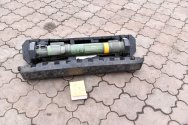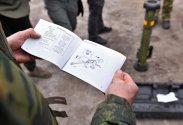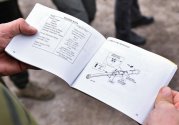You are using an out of date browser. It may not display this or other websites correctly.
You should upgrade or use an alternative browser.
You should upgrade or use an alternative browser.
US Military News, Reports, Data, etc.
- Thread starter tphuang
- Start date
USN commander announces reduction in numbers of manned surface combatants
[...]
“We need 12 carriers. We need a strong amphibious force to include nine big-deck amphibs and another 19 or 20 [LPDs] to support them. Perhaps 30 or more smaller amphibious ships to support Maritime Littoral Regiments… to 60 destroyers and probably 50 frigates, 70 attack submarines and a dozen ballistic missile submarines to about a 100 support ships and probably looking into the future about 150 unmanned.”
According to Gilday’s list, that force would be about 513 ships with 263 manned combatants, plus 100 logistics and supply ships and 150 unmanned vessels. Gilday told reporters later that the total would include Littoral Combat Ships.
[...]
-------------------------------
Let's unpack this article.
Visual representation of USN in early 2020:
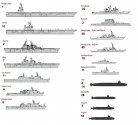
Planned numbers of "Battle Force" per end of fiscal year 2018-2020:
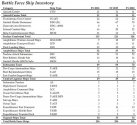
Table of ship levels per category from "30-year Shipbuilding Plan" published in December 2020:

Table of planned retired and introduced ships per category - from the same document:
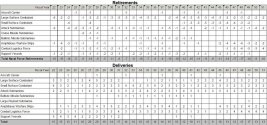
Table of all Arleigh Burke ships with dates of start and planned end of service at 35 years and numbers o ships entering service in each year.
This suggests early retirement of all Flight I and IIs in late 2020s to match the "60 destroyers" figure.
12 cruisers are retired and moved to reserve to be reinstated after a decade to preserve flag ships for carrier group escorts - 1 per CVN. They will replace the retained 10 cruisers between 2032 ad 2038 and serve for 10 years.
This leaves us with the speculative figure of "probably 50 frigates" that logically must include LCS.
17 Independence and 12 Freedom ships entering service 2015-2025 with projected service life until 2040-2050. 7 Freedom ships were retained for ongoing tests with new ASW systems but they will be retired if there are funds available for more frigates because USN doesn't want them.
20 Constellation frigates are planned and budgeted for. If we assume 1:1 replacement for Flight I and II Burkes then the number of frigates and Independence LCS matches "probably 50".
The new plan is a shift in manning requirements. Flight I/II destroyer requires 280 enlisted crew while Constellation only 176. Thirty three frigates can be crewed with the complement of twenty one destroyers. The loss of VLS (58 per ship) in task groups will be offset by unmanned vessels.
"Battle Force 2045" paper suggested 24 XLUUVs and 119 LUSVs, a total of 143 umanned.
12 LUSV (Large Unmanned Surface Vehicle) and 8 XLUUV (eXtra-Large Underwater Unmanned Vehicle) have been ordered for FY22-26 period. There is no information for large-scale production so it shouldn't be expected before 2028 at the earliest.
Test vessels LUSV Nomad and LUSV Ranger:
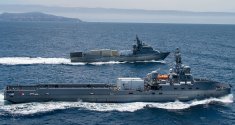
This means that in numbers of destroyers and frigates PLAN will achieve parity by end of 2020s without additional orders.
This means additional manpower available for CVNs and LHDs.
[...]
“We need 12 carriers. We need a strong amphibious force to include nine big-deck amphibs and another 19 or 20 [LPDs] to support them. Perhaps 30 or more smaller amphibious ships to support Maritime Littoral Regiments… to 60 destroyers and probably 50 frigates, 70 attack submarines and a dozen ballistic missile submarines to about a 100 support ships and probably looking into the future about 150 unmanned.”
According to Gilday’s list, that force would be about 513 ships with 263 manned combatants, plus 100 logistics and supply ships and 150 unmanned vessels. Gilday told reporters later that the total would include Littoral Combat Ships.
[...]
-------------------------------
Let's unpack this article.
Visual representation of USN in early 2020:

Planned numbers of "Battle Force" per end of fiscal year 2018-2020:

Table of ship levels per category from "30-year Shipbuilding Plan" published in December 2020:

Table of planned retired and introduced ships per category - from the same document:

Table of all Arleigh Burke ships with dates of start and planned end of service at 35 years and numbers o ships entering service in each year.
| 1.flight | 2.start | 3.ships | 4.end | 1 | 2 | 3 | 4 | 1 | 2 | 3 | 4 | 1 | 2 | 3 | 4 |
|---|---|---|---|---|---|---|---|---|---|---|---|---|---|---|---|
| I | 1991 | 1 | 2026 | IIA | 2002 | 3 | 2037 | IIA,R | 2017 | 2 | 2052 | III | 2025 | 3? | 2060 |
| I | 1992 | 1 | 2027 | IIA | 2003 | 3 | 2038 | IIA,R | 2018 | 1 | 2053 | III | 2026 | 3? | 2061 |
| I | 1993 | 1 | 2028 | IIA | 2004 | 4 | 2039 | IIA,TI | 2018 | 1 | 2053 | III | 2027 | 3? | 2062 |
| I | 1994 | 4 | 2029 | IIA | 2005 | 3 | 2040 | IIA,TI | 2019 | 1 | 2054 | III | 2028 | 2? | 2063 |
| I | 1995 | 6 | 2030 | IIA | 2006 | 2 | 2041 | IIA,TI | 2020 | 1 | 2055 | ||||
| I | 1996 | 5 | 2031 | IIA | 2007 | 3 | 2042 | IIA,TI | 2021 | 1 | 2056 | ||||
| I | 1997 | 3 | 2032 | IIA | 2008 | 1 | 2043 | IIA,TI | 2022 | 3 | 2057 | ||||
| II | 1998 | 4 | 2033 | IIA | 2009 | 3 | 2044 | IIA,TI | 2023 | 1 | 2058 | ||||
| II | 1999 | 3 | 2034 | IIA | 2010 | 3 | 2045 | IIA,TI | 2024 | 2 | 2059 | ||||
| IIA | 2000 | 2 | 2035 | IIA | 2011 | 2 | 2046 | III | 2023 | 2 | 2058 | ||||
| IIA | 2001 | 4 | 2036 | IIA | 2012 | 1 | 2047 | III | 2024 | 1 | 2059 |
This suggests early retirement of all Flight I and IIs in late 2020s to match the "60 destroyers" figure.
12 cruisers are retired and moved to reserve to be reinstated after a decade to preserve flag ships for carrier group escorts - 1 per CVN. They will replace the retained 10 cruisers between 2032 ad 2038 and serve for 10 years.
This leaves us with the speculative figure of "probably 50 frigates" that logically must include LCS.
17 Independence and 12 Freedom ships entering service 2015-2025 with projected service life until 2040-2050. 7 Freedom ships were retained for ongoing tests with new ASW systems but they will be retired if there are funds available for more frigates because USN doesn't want them.
20 Constellation frigates are planned and budgeted for. If we assume 1:1 replacement for Flight I and II Burkes then the number of frigates and Independence LCS matches "probably 50".
The new plan is a shift in manning requirements. Flight I/II destroyer requires 280 enlisted crew while Constellation only 176. Thirty three frigates can be crewed with the complement of twenty one destroyers. The loss of VLS (58 per ship) in task groups will be offset by unmanned vessels.
"Battle Force 2045" paper suggested 24 XLUUVs and 119 LUSVs, a total of 143 umanned.
12 LUSV (Large Unmanned Surface Vehicle) and 8 XLUUV (eXtra-Large Underwater Unmanned Vehicle) have been ordered for FY22-26 period. There is no information for large-scale production so it shouldn't be expected before 2028 at the earliest.
Test vessels LUSV Nomad and LUSV Ranger:

This means that in numbers of destroyers and frigates PLAN will achieve parity by end of 2020s without additional orders.
This means additional manpower available for CVNs and LHDs.
Last edited:
“We need 12 carriers. We need a strong amphibious force to include nine big-deck amphibs and another 19 or 20 [LPDs] to support them. Perhaps 30 or more smaller amphibious ships to support Maritime Littoral Regiments… to 60 destroyers and probably 50 frigates, 70 attack submarines and a dozen ballistic missile submarines to about a 100 support ships and probably looking into the future about 150 unmanned.”
total ships is something like 500 though. Still consider it he wants a pony and blo...ahem.
How much of an improvement is the SPY6 and SPY3 compared to the SPY1?
I just realised basically all the Korean, Japanese, Australian aegis destroyers and earlier Arleigh Burkes use the AN/SPY-1D(V), which is a PESA dating back to the 1990s. Does that limit their effectiveness in any way? How does it compare to the 346A?
I just realised basically all the Korean, Japanese, Australian aegis destroyers and earlier Arleigh Burkes use the AN/SPY-1D(V), which is a PESA dating back to the 1990s. Does that limit their effectiveness in any way? How does it compare to the 346A?
Last edited:
The Spy-3 and especially the Spy-6 has an increase in range and better object detection, however they’re maintenance intensive and are a pain in the ass to troubleshoot, however the Spy-1 is still ample for aircraft defenses but less so against ballistic missiles and fast moving and or low RCS targets.How much of an improvement is the SPY6 and SPY3 compared to the SPY1?
I just realised basically all the Korean, Japanese, Australian aegis destroyers and earlier Arleigh Burkes use the AN/SPY-1D(V), which is a PESA dating back to the 1990s. Does that limit their effectiveness in any way? How does it compare to the 346A?
How much of an improvement is the SPY6 and SPY3 compared to the SPY1?
I just realised basically all the Korean, Japanese, Australian aegis destroyers and earlier Arleigh Burkes use the AN/SPY-1D(V), which is a PESA dating back to the 1990s. Does that limit their effectiveness in any way? How does it compare to the 346A?
SPY-4 is more comparable to the SPY-1 as these are both longer ranged S-band radars that is optimized for search. SPY-3 is an X-band AESA, its a different category of radar that is more comparable to a dedicated fire control radar. The SPY-3's can be more directly compared to the Thalas APAR, and its Chinese equivalent is not the Type 346A itself but the smaller secondary X-band radars you see on the mast of the Type 055, whose proper Type number remains unknown to this day.
SPY-4 is considered troublesome and its techs outdated so its already considered discontinued, with all efforts going to the SPY-6. Other than the Gerald Ford, there are no other users of the SPY-4, making it a loner. The SPY-3 is active only on the two Zumwalts and the Gerald Ford, the last Zumwalt will use SPY-6 instead.
Zumwalt program canceled the SPY-4, leaving it with the SPY-3 only. Originally the ship planned to go dual band, with the typical S and X-band approach, with the S-band for broad air volume search, and the X-band for tighter tracking, fire control and surface search. Each band has their advantages and disadvantages so naval sensor architecture leans towards being multiband. Left with the X-band only, they added search modes on the SPY-3, however, X-band is far from optimal for search compared to S-band, so its range and ability to detect low RCS objects is not as good as you would expect with an S-band radar.
For different reasons, PESA as an architecture can match AESA in range and power but that's not really about what AESA is anyway. Your range and power depends on other factors that's not about the architecture anyway. PESA however, is limited to only one beam are emitted from the array at one time whereas on AESA you can emit several off from the same array. Since the receiver low noise amps are directly below the elements in the AESA instead of behind the array on PESA, its sensitivity is far greater with little loss or internal interference to the signal. This lets you use a weaker signal and still detect a target using a weaker echo. There are other advantages but discussing them are TLDR. Let's just say overall, AESA is more ECM resistant than PESA.
The SPY-X radar family can be listed as such.
SPY-1 --- You know what that is.
SPY-2 --- AESA version of SPY-1. Experimental purposes only, and not approved for production.
SPY-3 --- X-band AESA instead as part of a dual band approach with SPY-4.
SPY-4 --- S-band AESA
SPY-5 --- reserved for second generation X-band AESA. Originally planned as a dual band counterpart to the SPY-6/7. Progress unknown. Might be cancelled.
SPY-6 --- Second generation S-band AESA with GaN by Raytheon.
SPY-7 --- Lockheed's second generation S-band AESA with GaN. Export only for Canada and Spain and used with AEGIS ASHORE in Japan. With AEGIS ASHORE cancelled in Japan, Japan looks to use the SPY-7s on two new destroyers instead.
AEGIS is actually a Lockheed Martin trademark and SPY-1 is an LM product. However, SPY-6 is a Raytheon radar, so legally, the system isn't 'AEGIS' by copyright definition, so from the Lockheed Martin perspective, SPY-7 is the true successor to the SPY-1.
TerraN_EmpirE
Tyrant King
Not a shock or world breaking news. The US and West have been openly supplying Ukraine with arms from 2015 to today. This isn’t like the fake Stinger from Ukraine 2015.A captured SMAW in Ukraine, with technical data from the user manual... can't get any more official than that!
View attachment 84492View attachment 84493View attachment 84494


